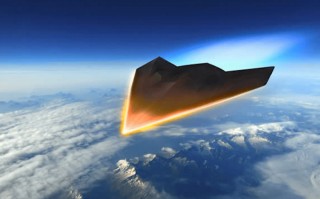Loading
Search
▼ Japan Is Joining The Race For Hypersonics
- Category:Event
Japan's R&D road map entails the creation of two classes of standoff hypersonic weapon systems
It’s not only the United States military that is scrambling to develop standoff hypersonic weapons to match China and Russia, but Japan is apparently also on course to arm itself with the latest high-tech weaponry and a satellite system to guide it.
According to a report by Mike Yeo in Defense News, Japan has outlined its R&D road map for homegrown, hypersonic weapons, confirming that it is seeking an incremental growth in capability while providing more details about the kinds of threats it is targeting.
In a Japanese-language document published on the Acquisition, Technology and Logistics Agency website, the government said two classes of standoff hypersonic systems will be deployed — the Hypersonic Cruise Missile (HCM) and the Hyper Velocity Gliding Projectile (HVGP), the report said. The former will be powered by a scramjet engine and appears similar to a typical missile, albeit one that cruises at a much higher speed while capable of traveling at long ranges, the report said.
The HVGP, on the other hand, will feature a solid-fuel rocket engine that will boost its warhead payload to a high altitude before separation, where it will then glide to its target using its altitude to maintain high velocity until impact, the report said.
The agency also provided more details regarding warhead payloads, with different warheads planned for both seaborne and land targets.
The former will be an armor-piercing warhead designed specifically for penetrating the deck of an aircraft carrier, while a land-attack version will utilize a high-density, explosively formed projectile, or EFP, for area suppression.
The agency expects both systems to navigate via satellite navigation with an inertial navigation system (INS) as backup. Japan is seeking to establish a network of seven satellites to enable continuous positioning for its self-defense forces, which will enable it to provide continuous navigation data without relying on foreign satellites.
Warhead guidance is achieved via either radio-frequency imaging converted from doppler shift data — which the government agency said will be able to identify stealthy naval targets in all weather conditions — or an infrared seeker.
Much work remains, however, in areas like hypersonic guidance systems, warhead and missile-body thermal shielding, and hypersonic propulsion systems in order for Japan to be able to field a viable standoff hypersonic weapons capability.
They are expected to enter service in the early 2030s.
Fast and formidable, hypersonic weapons travel five or more times the speed of sound, and are extremely difficult to intercept.
Hypersonic cruise missiles, which are powered by scramjet engines, are restricted below 100,000 feet, while hypersonic glide vehicles can travel higher.
- March 16, 2020
- Comment (0)
- Trackback(0)


